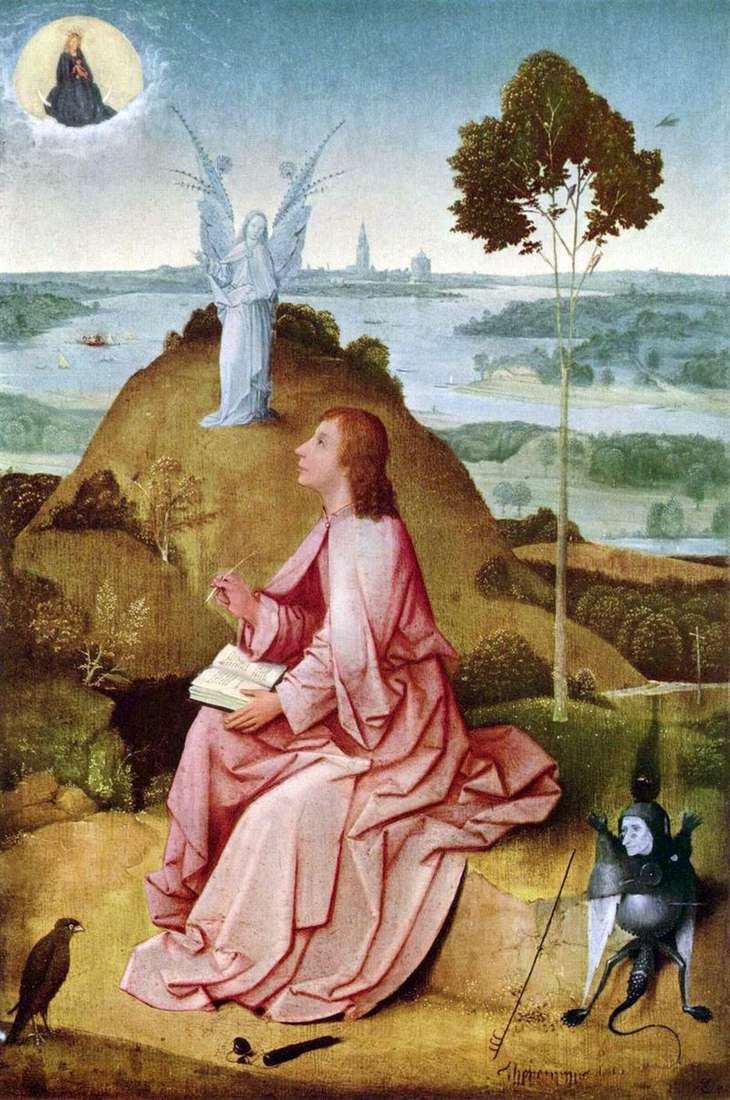
The young apostle John is depicted on the island of Patmos, where he was exiled by the Emperor Domitian, and where he created his Revelation – probably this book lies on his lap. His gentle gaze is fixed on the vision that appeared to him: “A woman clothed with the sun, under her feet is the moon…”. At her appearance, John points to an angel whose thin figure and translucent wings do not look much more material than the ghostly, hazy panorama of a Dutch city on the horizon.
Bosch, perhaps influenced by his predecessors who turned to this story, this time abandoned such a depiction of the devil’s devil that he so admired, and even the burning ships depicted on the left below and the small monster on the right, inspired by the images of the Apocalypse, can not seriously disturb that idyllic setting in which John rejoices at the apparition of the Virgin Mary “in glory.”
The monster, depicted by Bosch in the lower right corner of the picture, completely falls under the biblical description of locusts given by John the Theologian.
However, the humble evil takes revenge on the back, outside of the board, where the stream of demons and monsters written in grisaili technique, phosphorescent like a deep-water fish, pours on a double circle of 39 cm in diameter. The scenes of the Passion end up on the outer circle, culminating in the climax of the crucifixion. In the inner circle, the image of Golgotha, symbolically denoted as a rock, repeats at its apex, the pelican built its nest.
This bird, according to popular belief, feeding chicks blood, beating from his own breast, is the traditional symbol of the sacrifice brought by Christ. It was very appropriate to place a pelican on the reverse flap of the panel dedicated to the beloved disciple of Christ John, who, according to Dante, “buried the head on the chest of the Divine Pelican himself.”
It is assumed that “St. John on Patmos” was a side panel of the lost triptych, judging from the direction of the view of John – the right.
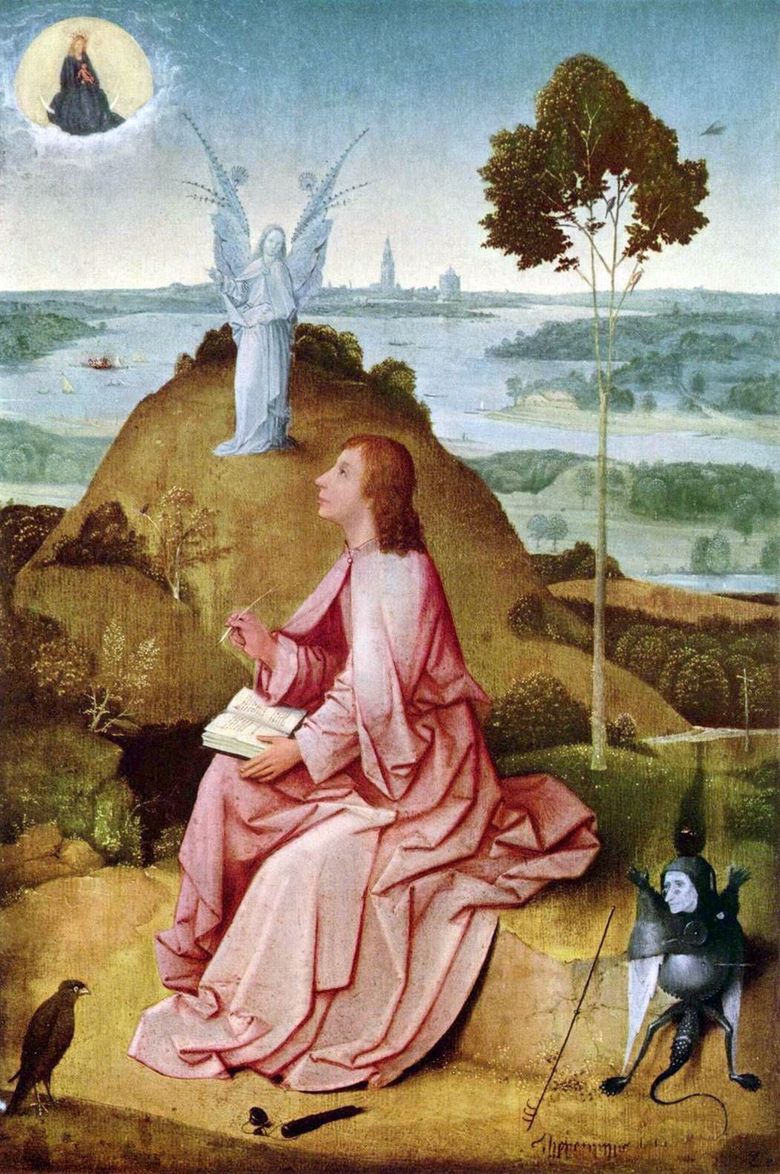 Saint Jean le théologien sur l’île de Patmos – Hieronymus Bosch
Saint Jean le théologien sur l’île de Patmos – Hieronymus Bosch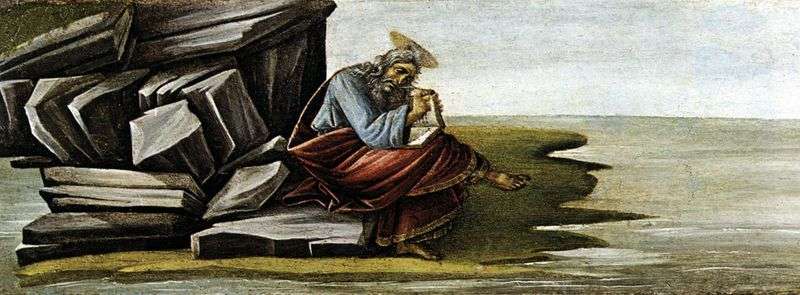 St. John the Evangelist, writing on the Pathos Book of Revelation by Sandro Botticelli
St. John the Evangelist, writing on the Pathos Book of Revelation by Sandro Botticelli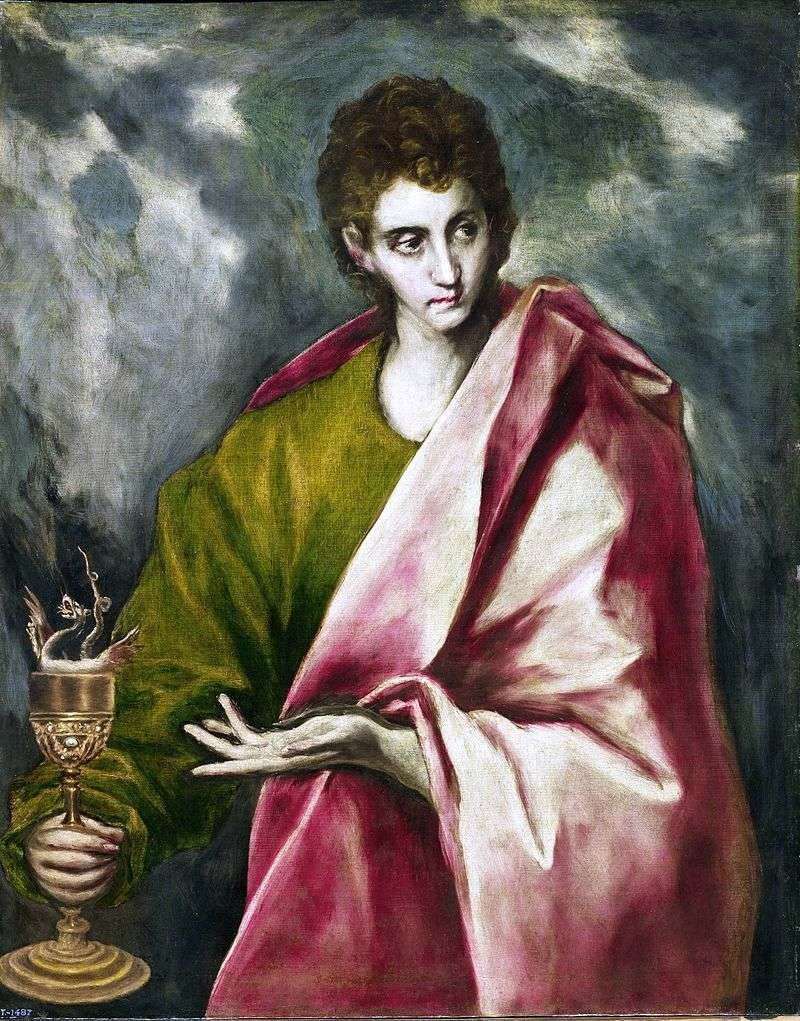 Apostle John the Evangelist by El Greco
Apostle John the Evangelist by El Greco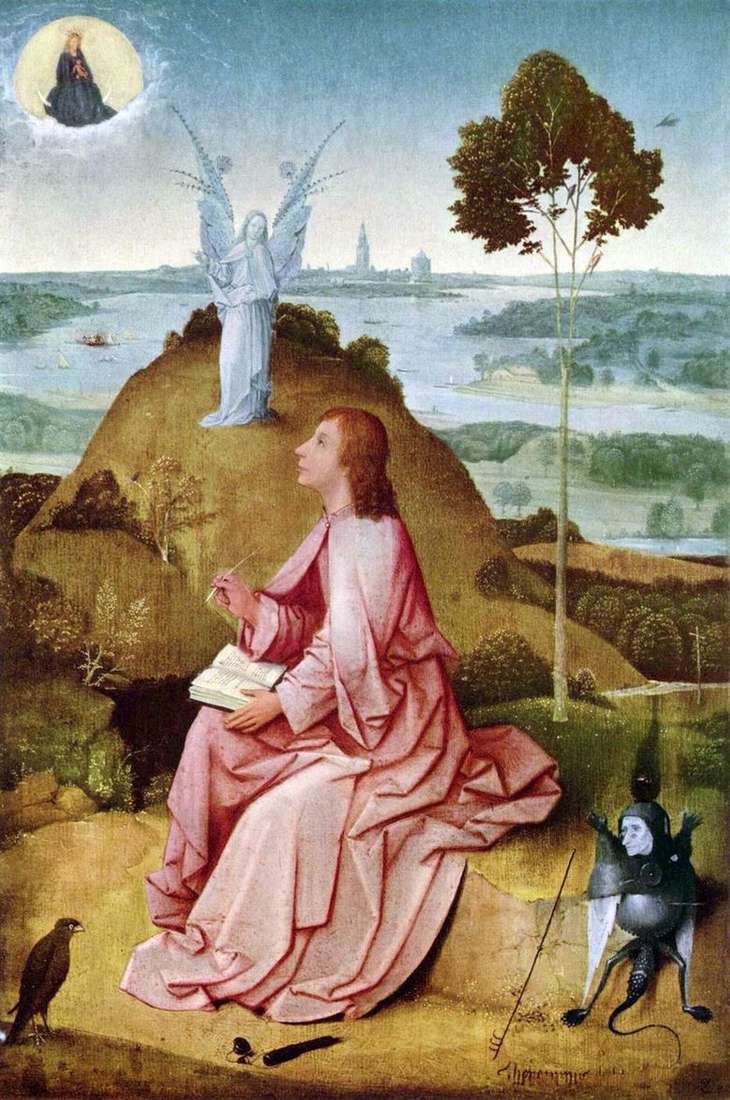 San Juan el teólogo en la isla de Patmos – Hieronymus Bosch
San Juan el teólogo en la isla de Patmos – Hieronymus Bosch St. John the Evangelist on about. Patmos by Hans Burgmayr
St. John the Evangelist on about. Patmos by Hans Burgmayr Saint Christopher by Hieronymus Bosch
Saint Christopher by Hieronymus Bosch Marriage in Cana of Galilee by Hieronymus Bosch
Marriage in Cana of Galilee by Hieronymus Bosch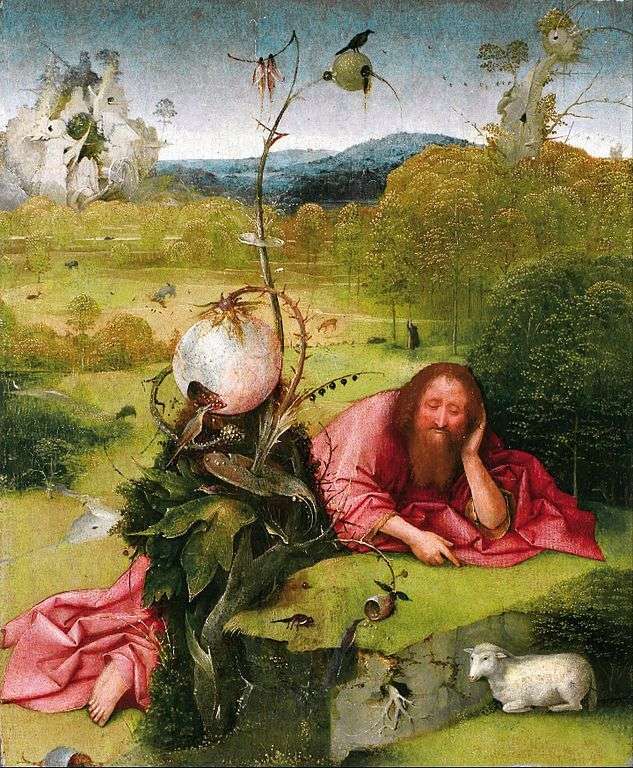 John the Baptist in the Wilderness by Hieronymus Bosch
John the Baptist in the Wilderness by Hieronymus Bosch